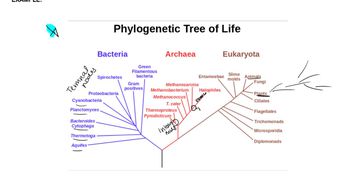What is the correct term for the mature female gamete?
Table of contents
- 1. Introduction to Genetics51m
- 2. Mendel's Laws of Inheritance3h 37m
- 3. Extensions to Mendelian Inheritance2h 41m
- 4. Genetic Mapping and Linkage2h 28m
- 5. Genetics of Bacteria and Viruses1h 21m
- 6. Chromosomal Variation1h 48m
- 7. DNA and Chromosome Structure56m
- 8. DNA Replication1h 10m
- 9. Mitosis and Meiosis1h 34m
- 10. Transcription1h 0m
- 11. Translation58m
- 12. Gene Regulation in Prokaryotes1h 19m
- 13. Gene Regulation in Eukaryotes44m
- 14. Genetic Control of Development44m
- 15. Genomes and Genomics1h 50m
- 16. Transposable Elements47m
- 17. Mutation, Repair, and Recombination1h 6m
- 18. Molecular Genetic Tools19m
- 19. Cancer Genetics29m
- 20. Quantitative Genetics1h 26m
- 21. Population Genetics50m
- 22. Evolutionary Genetics29m
9. Mitosis and Meiosis
Development of Animal Gametes
Problem 23
Textbook Question
Wolves and coyotes can interbreed in captivity, and now, because of changes in their habitat distribution, they may have the opportunity to interbreed in the wild. To examine this possibility, mitochondrial DNA from wolf and coyote populations throughout North America—including habitats where the two species both reside—was analyzed, and a phylogenetic tree was constructed from the resulting data. A sequence from a jackal was used as an outgroup, and a sequence from a domestic dog was included, demonstrating wolves as the origin of domestic dogs. What do you conclude about the possibility that interspecific hybridization occurred between wolves and coyotes on the basis of this phylogenetic tree?
 Verified step by step guidance
Verified step by step guidance1
Understand the context: The problem involves analyzing a phylogenetic tree constructed from mitochondrial DNA sequences of wolves, coyotes, and other related species. The goal is to determine if interspecific hybridization (breeding between species) occurred between wolves and coyotes.
Review the concept of a phylogenetic tree: A phylogenetic tree is a diagram that shows evolutionary relationships among species based on genetic data. Closely related species will have sequences that cluster together, while more distantly related species will be farther apart on the tree.
Identify the role of the outgroup: The jackal sequence serves as an outgroup, which helps root the tree and provides a point of comparison to determine the evolutionary relationships among the other species.
Examine the placement of wolf and coyote sequences: If wolf and coyote sequences are intermixed or form a shared clade (group), this suggests genetic exchange between the two species, which could be evidence of interspecific hybridization. If their sequences are distinct and form separate clades, this would suggest no significant hybridization.
Consider the inclusion of the domestic dog: The domestic dog sequence is included to demonstrate its evolutionary origin from wolves. This provides additional context for interpreting the relationships among the species but does not directly affect the analysis of wolf-coyote hybridization.
 Verified video answer for a similar problem:
Verified video answer for a similar problem:This video solution was recommended by our tutors as helpful for the problem above
Video duration:
2mPlay a video:
Was this helpful?
Key Concepts
Here are the essential concepts you must grasp in order to answer the question correctly.
Interspecific Hybridization
Interspecific hybridization refers to the mating and reproduction between individuals of different species, resulting in hybrid offspring. This phenomenon can occur when species share overlapping habitats and have compatible reproductive mechanisms. In the context of wolves and coyotes, understanding the potential for hybridization is crucial for assessing their evolutionary relationship and genetic diversity.
Recommended video:
Guided course

Drosophila P Element
Phylogenetic Tree
A phylogenetic tree is a diagram that represents the evolutionary relationships among various biological species based on their genetic characteristics. It illustrates how species are related through common ancestry and can indicate the degree of genetic divergence. In this case, the phylogenetic tree constructed from mitochondrial DNA sequences helps visualize the genetic connections between wolves, coyotes, and other canids, providing insights into their evolutionary history.
Recommended video:
Guided course

Phylogenetic Trees
Mitochondrial DNA (mtDNA)
Mitochondrial DNA (mtDNA) is the genetic material found in mitochondria, the energy-producing organelles in cells. It is inherited maternally and is often used in evolutionary biology to trace lineage and relationships among species. Analyzing mtDNA from wolves and coyotes allows researchers to assess genetic similarities and differences, which is essential for understanding the potential for interspecific hybridization and the evolutionary history of these species.
Recommended video:
Guided course

Organelle DNA Characteristics
Related Videos
Related Practice
Multiple Choice
396
views
1
rank
1
comments


